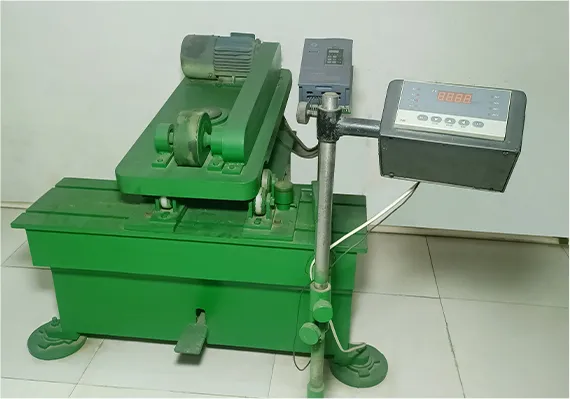 Afrikaans
Afrikaans  Albanian
Albanian  Amharic
Amharic  Arabic
Arabic  Armenian
Armenian  Azerbaijani
Azerbaijani  Basque
Basque  Belarusian
Belarusian  Bengali
Bengali  Bosnian
Bosnian  Bulgarian
Bulgarian  Catalan
Catalan  Cebuano
Cebuano  Corsican
Corsican  Croatian
Croatian  Czech
Czech  Danish
Danish  Dutch
Dutch  English
English  Esperanto
Esperanto  Estonian
Estonian  Finnish
Finnish  French
French  Frisian
Frisian  Galician
Galician  Georgian
Georgian  German
German  Greek
Greek  Gujarati
Gujarati  Haitian Creole
Haitian Creole  hausa
hausa  hawaiian
hawaiian  Hebrew
Hebrew  Hindi
Hindi  Miao
Miao  Hungarian
Hungarian  Icelandic
Icelandic  igbo
igbo  Indonesian
Indonesian  irish
irish  Italian
Italian  Japanese
Japanese  Javanese
Javanese  Kannada
Kannada  kazakh
kazakh  Khmer
Khmer  Rwandese
Rwandese  Korean
Korean  Kurdish
Kurdish  Kyrgyz
Kyrgyz  Lao
Lao  Latin
Latin  Latvian
Latvian  Lithuanian
Lithuanian  Luxembourgish
Luxembourgish  Macedonian
Macedonian  Malgashi
Malgashi  Malay
Malay  Malayalam
Malayalam  Maltese
Maltese  Maori
Maori  Marathi
Marathi  Mongolian
Mongolian  Myanmar
Myanmar  Nepali
Nepali  Norwegian
Norwegian  Norwegian
Norwegian  Occitan
Occitan  Pashto
Pashto  Persian
Persian  Polish
Polish  Portuguese
Portuguese  Punjabi
Punjabi  Romanian
Romanian  Russian
Russian  Samoan
Samoan  Scottish Gaelic
Scottish Gaelic  Serbian
Serbian  Sesotho
Sesotho  Shona
Shona  Sindhi
Sindhi  Sinhala
Sinhala  Slovak
Slovak  Slovenian
Slovenian  Somali
Somali  Spanish
Spanish  Sundanese
Sundanese  Swahili
Swahili  Swedish
Swedish  Tagalog
Tagalog  Tajik
Tajik  Tamil
Tamil  Tatar
Tatar  Telugu
Telugu  Thai
Thai  Turkish
Turkish  Turkmen
Turkmen  Ukrainian
Ukrainian  Urdu
Urdu  Uighur
Uighur  Uzbek
Uzbek  Vietnamese
Vietnamese  Welsh
Welsh  Bantu
Bantu  Yiddish
Yiddish  Yoruba
Yoruba  Zulu
Zulu Vertical Guide Rollers for Enhanced Precision and Stability in Machinery Operations
Vertical Guide Rollers Enhancing Efficiency in Material Handling
In the intricate world of manufacturing and material handling, every component plays a crucial role in ensuring the smooth transition of products through various stages of production. One such component that often goes unnoticed but significantly contributes to efficiency is the vertical guide roller. These specialized rollers are instrumental in guiding materials through processing and transportation systems, ensuring they follow the correct path while maintaining alignment and minimizing wear.
Understanding Vertical Guide Rollers
Vertical guide rollers, as the name suggests, are designed to support and guide materials vertically. They are typically cylindrical in shape and mounted on a frame, allowing them to facilitate the movement of goods, including sheets, plates, and other flat products. Their primary function is to direct the flow of materials while preventing deviations that could potentially lead to damage or misalignment.
The design of vertical guide rollers varies based on their application. Some are equipped with bearings to reduce friction, while others might feature additional components like rubber linings to enhance grip and prevent slippage. The materials used for manufacturing these rollers often include stainless steel, plastic, or composite materials, each chosen for their specific properties that best suit the operational environment.
Applications in Various Industries
Vertical guide rollers find extensive applications in several industries, including manufacturing, logistics, and construction. In manufacturing setups, they are integral to conveyor systems where heavy or bulky materials need to be transported. By ensuring that these materials are properly aligned, vertical guide rollers minimize the risk of jams that could halt production and lead to significant downtime.
In the logistics sector, where precise handling of goods is paramount, vertical guide rollers enhance the efficiency of loading and unloading processes. They allow packages and pallets to move seamlessly along conveyors, reducing manual handling requirements and increasing throughput. This not only speeds up operations but also contributes to a safer working environment by reducing the risk of injury associated with manual lifting and carrying.
In construction, vertical guide rollers are often employed in cranes and hoisting systems, where accurate positioning of heavy materials is critical
. Their ability to facilitate smooth vertical and horizontal movements ensures that materials are delivered precisely where needed, optimizing workflow and preventing potential accidents.vertical guide rollers

Importance of Maintenance
To maximize the efficiency and longevity of vertical guide rollers, regular maintenance is essential. Like any mechanical component, rollers can wear over time, leading to increased friction and potential malfunction. Implementing a routine maintenance schedule can help identify any issues early on, such as misalignment or excessive wear, which can be addressed before leading to costly downtimes.
Lubrication of bearings and other moving parts is critical, as it reduces friction and heat buildup. Additionally, inspecting roller integrity and alignment can prevent undue stress on the system. Regular cleaning to remove debris and material buildup will also ensure smooth operation, prolonging the lifespan of the rollers.
Innovations and Future Directions
As industries evolve, so too do the technologies associated with vertical guide rollers. Advancements in materials science have led to the development of stronger, more durable options that can withstand greater loads and harsher environments. Similarly, the integration of sensors and smart technologies into roller systems promises to enhance operational efficiency further. These innovations can provide real-time monitoring of roller performance, alerting personnel to issues before they result in system failures.
Moreover, the advent of automation and robotics is likely to revolutionize the use of vertical guide rollers. Automated guided vehicles (AGVs) and robotic arms can leverage these rollers to enhance their material handling capabilities, leading to greater efficiency and less human intervention.
Conclusion
In summary, vertical guide rollers are indispensable components in the machinery and systems that drive the manufacturing and logistics industries. Their ability to guide materials accurately and efficiently not only improves productivity but also enhances safety and reduces operational costs. As innovations continue to emerge, the future of vertical guide rollers appears promising, paving the way for smarter, more efficient material handling solutions. Understanding their significance and ensuring proper maintenance can lead to improved performance in any setting where materials need to be handled with precision.
-
Revolutionizing Conveyor Reliability with Advanced Rubber Lagging PulleysNewsJul.22,2025
-
Powering Precision and Durability with Expert Manufacturers of Conveyor ComponentsNewsJul.22,2025
-
Optimizing Conveyor Systems with Advanced Conveyor AccessoriesNewsJul.22,2025
-
Maximize Conveyor Efficiency with Quality Conveyor Idler PulleysNewsJul.22,2025
-
Future-Proof Your Conveyor System with High-Performance Polyurethane RollerNewsJul.22,2025
-
Driving Efficiency Forward with Quality Idlers and RollersNewsJul.22,2025





























